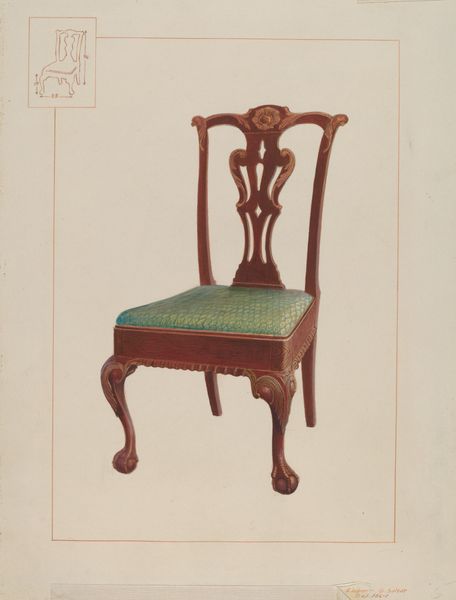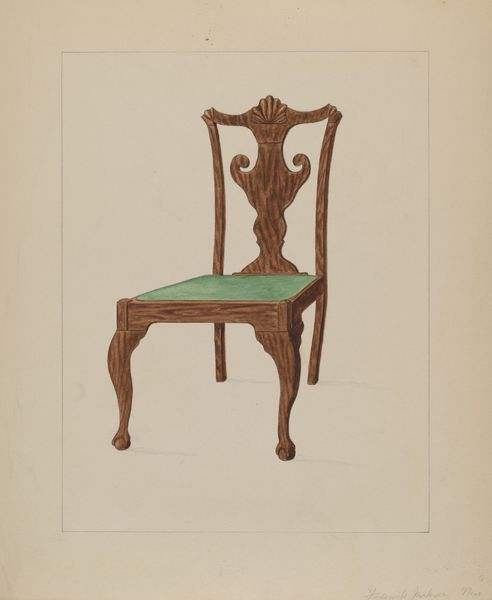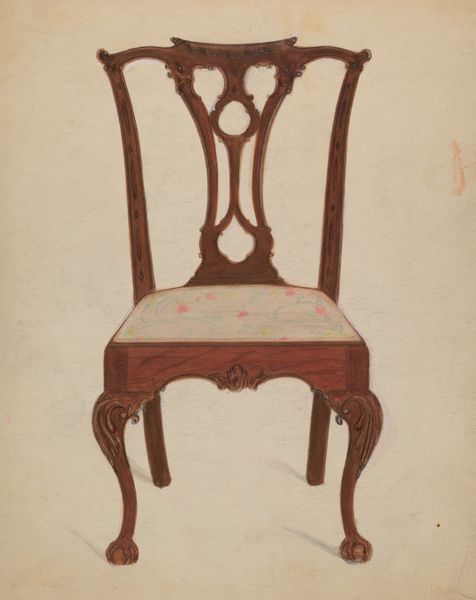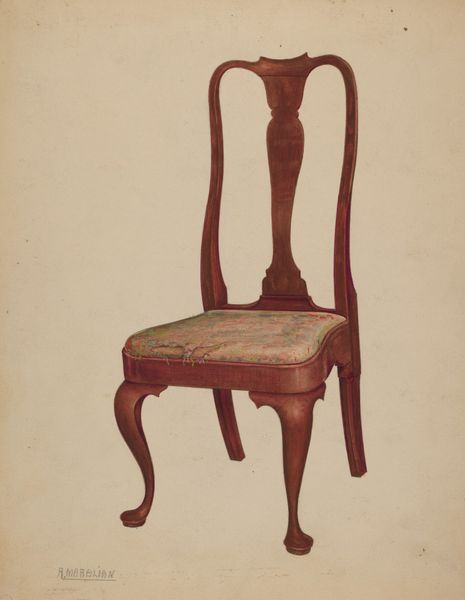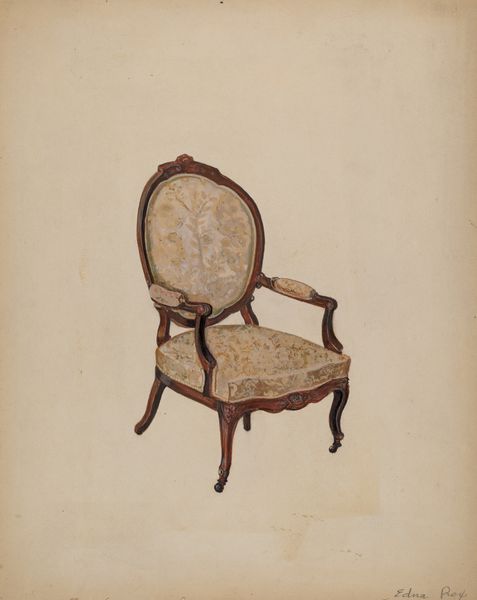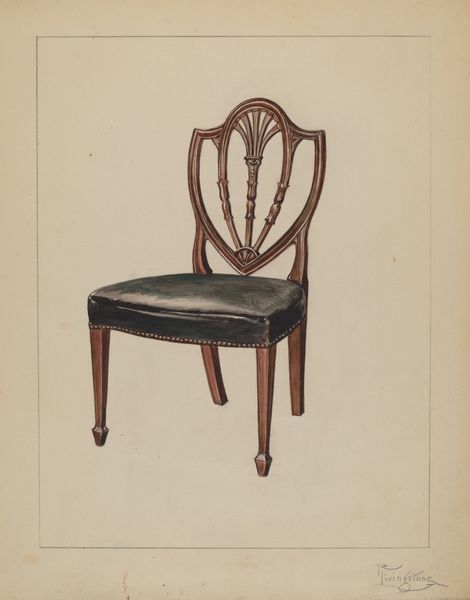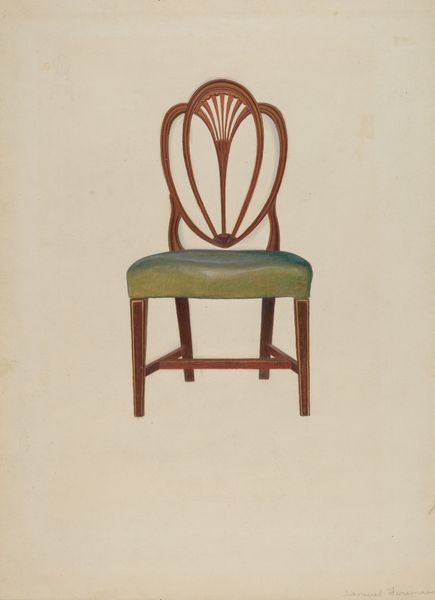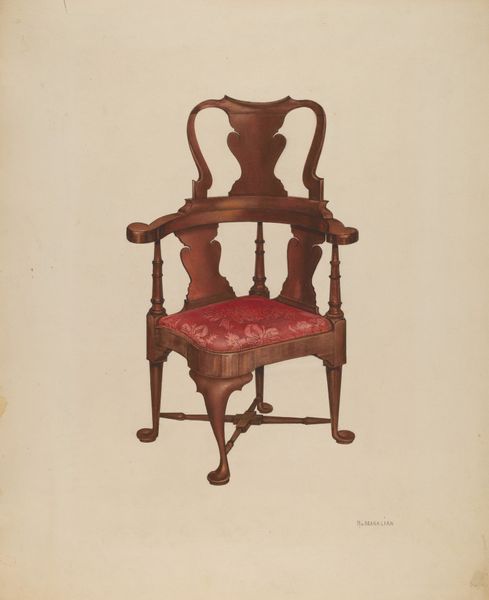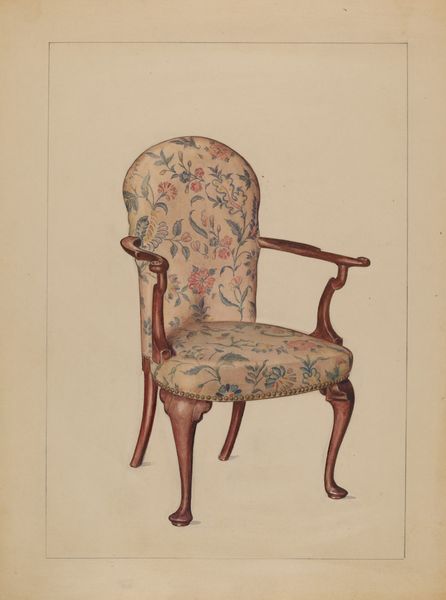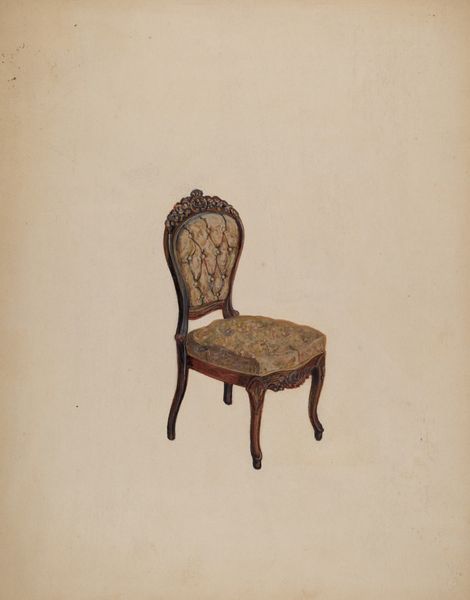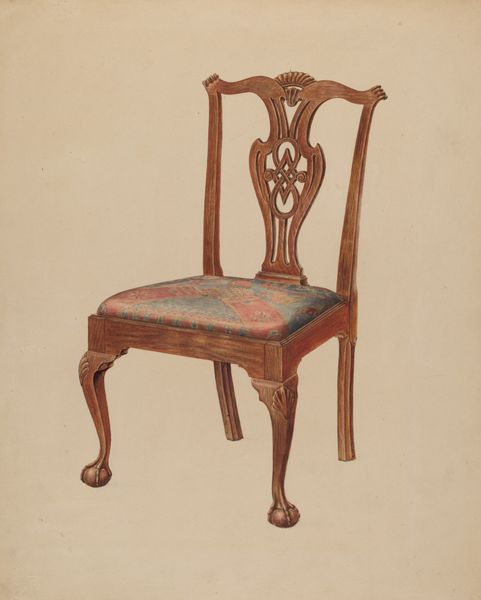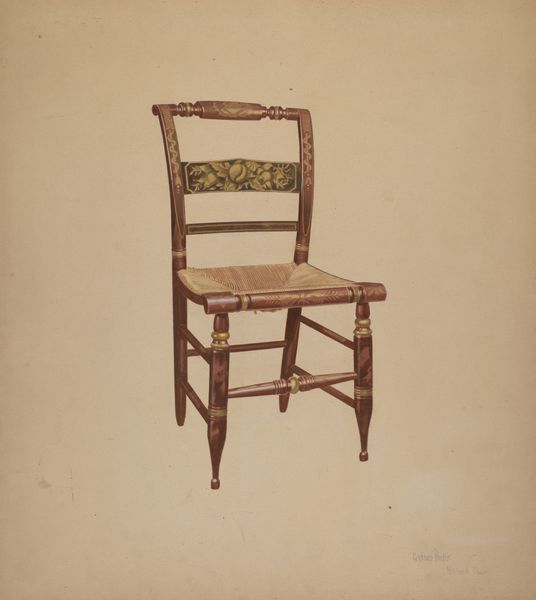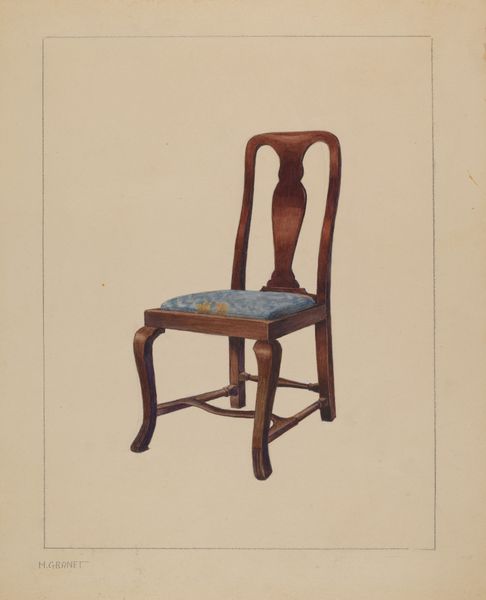
drawing, watercolor
#
drawing
#
water colours
#
watercolor
#
academic-art
#
watercolor
Dimensions: overall: 30.3 x 22.7 cm (11 15/16 x 8 15/16 in.) Original IAD Object: 39"high overall, seat 15x15 in. 20 1/2" wide, front. See d.s. for dts.
Copyright: National Gallery of Art: CC0 1.0
Curator: This watercolor, simply titled "Chair," was created around 1937 by Edward L. Loper. What strikes you first about it? Editor: An almost palpable sense of restraint, a very tight formal approach. The palette is so contained—browns and tans, echoed in the floral of the seat, with such fine lines for definition. Curator: Well, look closer at the detail on those claw-and-ball feet; it evokes a bygone era, an almost primal connection to strength and support. The chair itself transforms into a kind of symbolic protector. Editor: Yes, but the rendering lacks the gravitas such symbolic weight might suggest. There is this detached quality, which leads me to examine the structure, how line defines plane and creates dimension in the composition. I’m seeing careful articulations but missing any exploration. Curator: But don't you think the way Loper focuses solely on this singular object heightens our awareness? The empty space forces us to fill the visual void with our own cultural associations – what chairs represent, who sat in them. Editor: Perhaps, but I'm much more drawn to how the artist meticulously depicts the interplay of light and shadow on the carved wood, or uses those precise outlines of the Queen Anne-style frame to convey elegance through line alone. Curator: I see this type of chair linked to heritage. We can think of ancestral connections; we have this desire to sit in a piece that has sustained those who have passed and kept history alive, with us. Editor: Certainly the intention seems less about documenting a chair as an object, and more about examining its construction with scientific scrutiny, if one accounts for his other notes alongside the illustration. It becomes this self-contained world. Curator: I appreciate how you see both utility and this underlying architectural foundation, but the artist is using an archetypal design to channel cultural memories, even spiritual significance. Editor: I remain anchored in the meticulous application of watercolor. And, indeed, thank you for letting me articulate a semiotic tension between structure and intent that makes viewing all the richer.
Comments
No comments
Be the first to comment and join the conversation on the ultimate creative platform.
